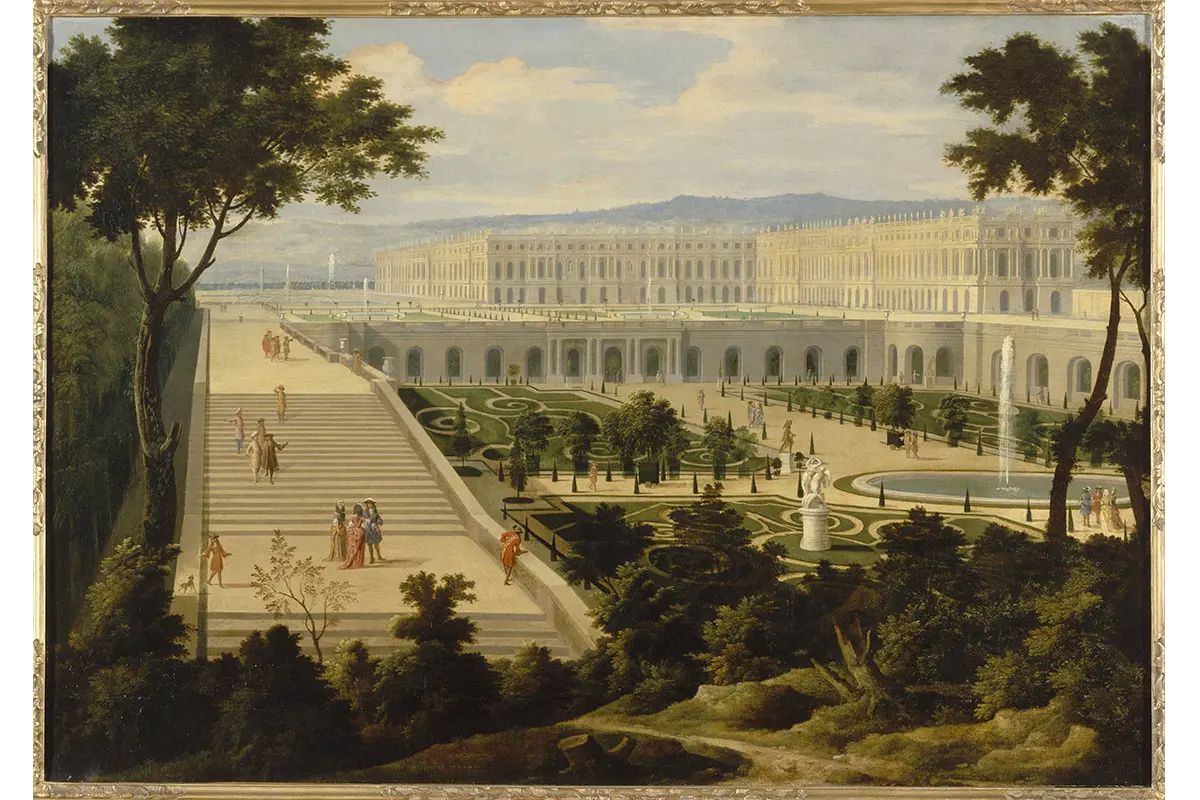«How the Sun King’s palace played a key role in French diplomacy and was at the center of political, artistic and commercial exchanges between East and West»
The importance of the court venue
The Palace of Versailles represented a crucial meeting point in the seventeenth and eighteenth centuries. As the seat of the French court, it was populated by visitors who reached the royals from different parts of the world. Through encounters with other civilizations, French culture itself mutated towards orientalists.
Above all, the taste of the kings influenced that of the court, favoring an exchange between Eastern and Western markets. The birth of trade exchanges had as protagonists: furniture, lacquerware, porcelain, precious stones. But the court, particularly the kings from Louis XIV, wanted to assert their power and capacity for innovation. For this reason, in addition to research in head botanical, zoological, astronomical, organized great expeditions.
The Versailles & the World exhibition
The exhibition organized by the Palace of Versailles in collaboration with Louvre Abu Dhabi and France Muséums has a precise purpose. Firstly, select a series of masterpieces from collections belonging to the Palace itself, along with other French and international works.
Some involved in the research are the Louvre Museum, National Library of France, Museum of Decorative Arts, British Royal Collection. But even more so to affirm through the collections the ability that Versailles and the court had. Their ability to become the initiators of relations between East and West. «The various paintings, decorative art objects, tableware, books and manuscripts on show will enable visitors to understand how the Palace of Versailles and its Court became the launchpad for relations».
The exhibition will be featured at the Louvre Abu Dhabi from January 26 to June 4, 2022. The display presents historical and cultural aspects, exchanges, and scientific innovations.
A Palace open to the world
An examination of the cultural diversity of visitors to Versailles is the subject of the first section. The Palace was a place of exchange favored by the openness of King Louis XIV. His desire for visibility allowed visitors from all over the world to come to Versailles. As a result, in a sense, beginning in the seventeenth century, this behavior posed the basis for today’s tourism.
«The appeal of this unrivaled Palace and its huge gardens designed by Le Nôtre resulted in a relentless parade of travelers. Princes and ambassadors, artists and merchants, architects and scientists, philosophers and adventurers from every continent», curators affirm. This propensity has been a critical tool in diplomacy and politics. In addition to the promotion of Versailles, it provided a way to celebrate the greatness of the Crown abroad.
The revelation and dream of the East: exoticism at Versailles
The second part of the exhibition focuses on an aspect that has and continues to fascinate the European public. The focus is on products from or inspired by the East, a clear example of a wide-ranging exchange. The ambassadors who came from these places physically brought items but were also responsible for influences on various spheres.
Collectors or artists flocked to admire or take inspiration for their projects. Moreover, this kind of exchange with a distant culture allowed the French to develop a taste for the exotic. «As of this time, the East became an object of dreams, interpreted through a French lens. As a result, Versailles became the focal point of East-West artistic exchanges, resulting in the development of Turkish and Chinese decorative art and objects».
Between Heavens and Earth: discovering the world
The last section focuses on the evolutionary aspect of scientific research in those years. France implemented its scientific policies to encourage discoveries. However, the area that fascinated the country most was the terrestrial and celestial worlds. Colbert was one of the driving forces behind this revolution.
In the seventeenth century, the court realized the importance of the scientific aspect and development. Above all, a genuine policy allowed the French power to assert itself at diplomatic, strategic, and commercial levels. «The creation of the French Academy of Sciences in 1666 brought together the greatest scientists in Europe. And led to the first experiments with hot-air balloons».
There was also a worldwide synergy among the vastness of scientific research in disparate fields, from geography to astronomy. The nations invested in science with greater emphasis out of a sense of emulation or overpowering others.
In conclusion, the result was an ever-increasing knowledge of a world that would never be the same again. «With this in mind, the Versailles estate became a microcosm of the world, bringing together plants and wildlife from every corner of the globe».
The Versailles & the World
Exhibition curated by Hélène Delalex, Curator, Furniture and Decorative Arts at the musée national des châteaux de Versailles et de Trianon. While Bertrand Rondot, is Chief Curator, Furniture and Decorative Arts, at the musée national des châteaux de Versailles et de Trianon




















